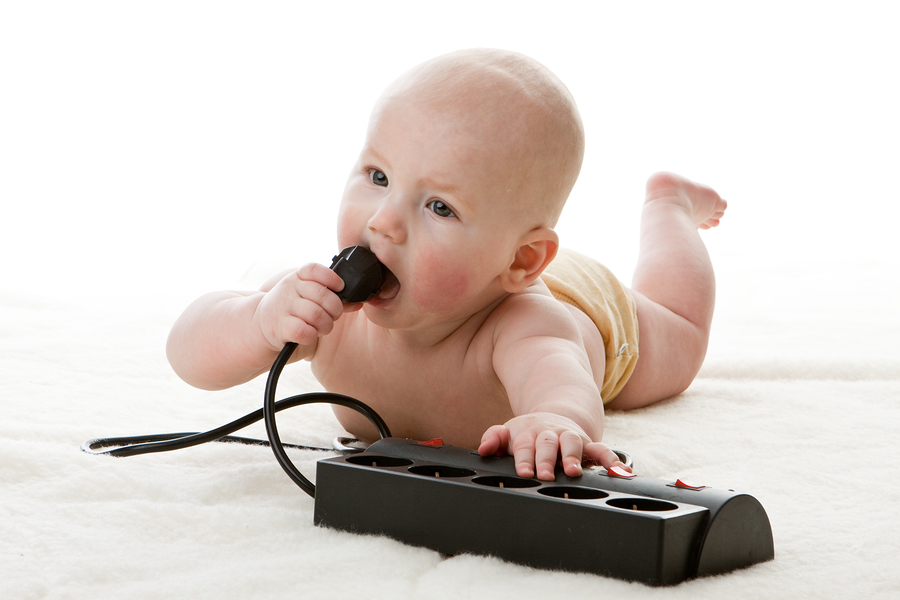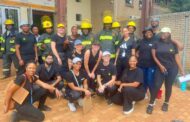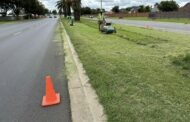Parents worry endlessly about how to protect their children from abduction and violence but, generally overlook one of the biggest threats to their child’s safety – their own home.
Children between the ages of one and four are more likely to be killed by fire, burns, drowning, choking, poisoning or falls than by a stranger’s violence.
If home safety measures seem overwhelming, let our safety checks help you see at a glance what needs to be done before your baby arrives, crawls or starts toddling and climbing.
View your house as they would
The most effective way to ensure your child’s safety is to take the “babies-eye view” of your home. Get down on your hands and knees to see what things look like from their level.
By asking yourself a few questions like what looks tempting, what is in my reach and where can I go, you will figure out which cupboards, drawers and other spaces pose a danger to your child. As your child starts walking and climbing, you’ll have to re-evaluate your home to determine what else could pose a danger to them.
Kitchen
• Install safety locks on all your cabinets and doors to keep children away from household items which include cleaning products, cutlery and appliances.
• Never leave any hot pots or pans unattended on the stove. A child may try to reach for these, causing the hot contents to fall on them.
• Put latches on oven, microwave and refrigerator doors and install covers on all stove dials so your child can’t turn on the burners.
• Put a lid on your dustbin as a child may try to reach in a fall.
• If you have a dishwasher or washing machine, make sure it remains closed at all times.
Bathroom
• Remember to keep the toilet lid down. Install a toilet lock to prevent your baby from lifting the lid.
• Put razors, scissors, nail clippers, tweezers and other sharp objects in a locked cabinet or high up in a linen closet well out of your baby’s reach.
• Unplug all electrical appliances (hair dryer, curling iron etc.) and store them away in a high draw or cupboard.
• Store all medications and vitamins out of reach of children.
• Place a non-slip mat inside and outside the bath and shower.
• Never leave your child in a bath or shower unattended.
Around the house
• Cover all sharp furniture edges with padding or foam.
• Cover all plugs with safety covers.
• Hide electrical cords behind furniture or use cord-hiding devices.
• Use doorstops and door holders to stop them from slamming into your child.
• Cut looped window blinds to prevent your child from becoming entangled.
• If you have a fireplace, install a grill and never leave a child unattended.
• Keep electronic equipment like decoders, DVD players and stereos out of reach or locked up.
• Secure furniture that can topple over (bookcases, chests of drawers for example).
Garden
• Make sure that all pools are covered with the correct covers at all times.
• Store and lock away all tools (hand, power and gardening tools for example).
• Ensure that your child does not gain access to any fertilizers or pesticides.
• Maintain play equipment. Ensure they do not show signs of wear or rust. Make sure safety netting isn’t frayed or torn, bolts and screws are tightly fastened and “S” hooks are closed.
• Ensure you do not have any toxic plants in your house or garden.
General
• Taking a first aid course will enable you to deal with any incident more effectively. New parents as well as caregivers and domestic workers should be proficient in CPR and basic first aid.
• A comprehensive first aid kit should always be kept at home should any emergency arise.
• A detailed list of emergency numbers can be pinned on the fridge and be kept next to the phone.
• A fire extinguisher should be kept in the kitchen. Ensure that it is out of reach of children.
Using our comprehensive checklist, you will be able to keep your child safe and prevent most injuries.
Remember, realhelprealfast.
Russel Meiring
ER24 Spokesperson
Also view:


























